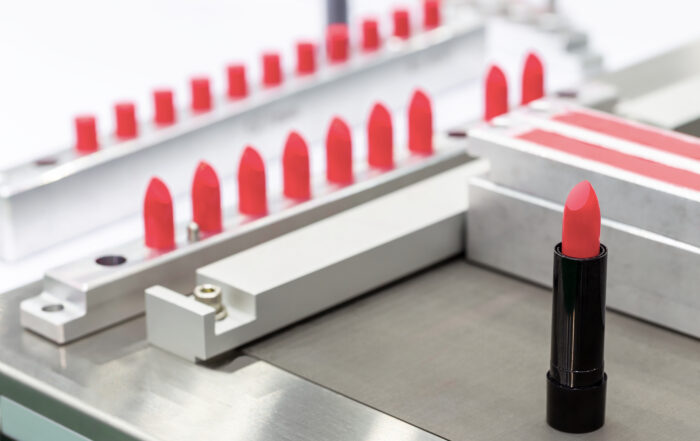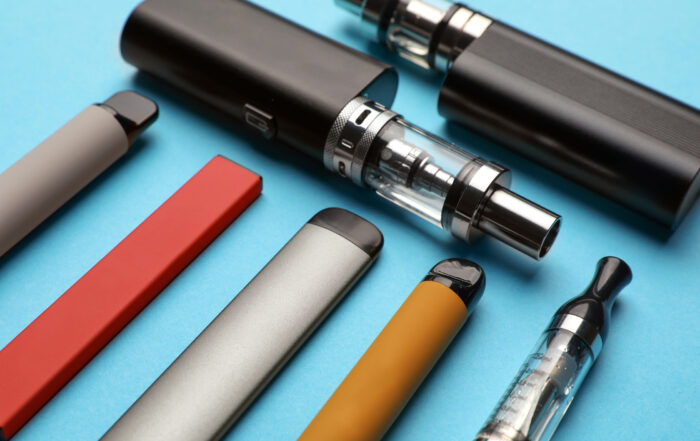
Suggestions for Improvement of FDA Review of New Tobacco Products
By Dave Dobbins
The Family Smoking Prevention and Tobacco Control Act (Tobacco Control Act) (Pub. L. No. 111-31 (2009)) provides two primary pathways for marketing authorization of non-therapeutic nicotine products. Products on the market as of February 15, 2007 are “pre-existing tobacco products” and authorized to be sold in the United States.[1] Products that are “substantially equivalent” to pre-existing tobacco products are authorized so long as they do not have characteristics that “raise different questions of public health.”[2] For products that do not fit within these paths, they must be authorized as new tobacco products through Section 910 of the Act. For new tobacco products, a manufacturer must establish that the introduction of the product into the market is “appropriate for the protection of the public health.”[3] This is referred to as “the APPH standard.”[4]
The APPH standard is entirely new in U.S. law. Thus, there is no regulatory or case history to help define the term. Likewise, this standard is not used in other jurisdictions that might provide guidance as to its content.[5] This lack of guidance has led to a predictable vacuum in the understanding of the standard, and to date, there have been over 26 million applications for new tobacco products since the U.S. Food and Drug Administration (FDA) deemed e-cigarettes to be subject to the APPH standard, and only 23 marketing authorizations for e-cigarette products and a handful for one heat-not-burn system, one brand of Swedish snus, and very low nicotine content cigarettes. Given these numbers, it is fair to say that the process is either very burdensome, poorly understood by the regulator and regulated manufacturers, or perhaps all of the above. The recent Operational Evaluation of the Center for Tobacco Products (CTP) by the Reagan-Udall Foundation echoes these concerns.[6]
The statute does give some context for the APPH standard, stating that determinations should consider:
the risks and benefits to the population as a whole, including users and nonusers of the tobacco product, and taking into account—(A) the increased or decreased likelihood that existing users of tobacco products will stop using such products; and (B) the increased or decreased likelihood that those who do not use tobacco products will start using such products.[7]
This language makes it clear that the APPH standard is not to be considered in a vacuum but rather against the current state of nicotine and tobacco use (i.e., cigarette smoking). If a new, less harmful product can encourage users of more toxic products to switch, it should be considered for authorization provided that this benefit is not offset by harms to those who otherwise would not have used nicotine products. However, the language of the statute (and the legislative history) gives no guidance on how to weigh those concerns, and that language appears to be the prime source of the current, apparently nearly unachievable, regulatory hurdle for the premarket authorization of new commercial nicotine products. Nevertheless, the language must have some meaning, and it clearly contemplates a pathway for new products. It cannot be nullified by the agency adopting an interpretation that is a de facto ban, and that seems close to what is happening in the current environment.
In December 2022, the Reagan-Udall Foundation, at FDA’s request, conducted an operation evaluation of certain components of FDA’s tobacco regulatory program and had this to say on new product authorization standards:
The Panel heard from multiple stakeholders that the application review process, in general, requires a new approach. Although some processes are perceived as working . . . , PMTAs [premarket tobacco product authorizations] are generally perceived as ineffective and problematic. Concerns included lack of adequate guidance and transparency regarding CTP expectations, lack of clarity regarding review standards, [and] an unsustainable process of requiring a complete PMTA filing for each product . . . .[8]
The review encourages CTP to “develop a more clear and predictable framework for high-quality PMTA . . . application submission and reviews by” including “development and completion of policy and scientific standards” for new tobacco product submissions.[9] It is difficult to disagree given the current state of the administration of this pathway, and the call for a more transparent and predictable framework is not new.[10]
How are manufacturers to adequately meet the APPH standard when it is becoming increasingly apparent that the regulating agency doesn’t have a consistent view of what it means? At one point, FDA felt comfortable authorizing a menthol version of the IQOS heat-not-burn system. Under the new leadership of Dr. Brian King, Director of CTP, it now appears highly unlikely that any further flavored products (including menthol) will be authorized given that he personally overruled a recommendation from CTP’s Office of Science that the Logic menthol e-cigarette be authorized.[11] At least the staff at the Office of Science appeared to be confused about what standard should be used to evaluate such products when it initially suggested authorization of the device. Another example is FDA’s decision in July 2021 that flavored e-cigarettes would not be authorized unless applications included randomized control studies (RCTs) showing smoker switching behavior to the flavored product (the “fatal flaw” memo).[12] This is despite previous advice that such studies would not be necessary.[13]
Industry has responded to the flood of marketing denial orders (MDO) and the unicorn likelihood of receiving a marketing granted order (MGO) by turning to the courts. The record has been mixed, although at this point over 100 MDOs have been stayed in various jurisdictions. The D.C. Circuit and the Third, Fourth, and Seventh Circuits have upheld MDOs despite the “fatal flaw” analysis.[14] The Second Circuit recently joined this group.[15] The Eleventh Circuit has overruled an MDO on the basis that FDA failed to fully review applications that did not include randomized control studies without directly addressing the issue of whether the change in guidance itself was arbitrary and capricious.[16] However, the strongest ruling yet has come from the Fifth Circuit in R.J. Reynolds v. FDA, 65 F.4th 182 (5th Cir. 2023), finding that the agency’s actions have constituted a de facto flavor ban and that this is a substantive rule that the agency adopted without required notice and comment, noting the decision was “not close.”[17] This conflicts with a previous Fifth Circuit opinion in Wages and White Lions Invs. LLC v. FDA, 16 F.4th 1130 (5th Cir. 2021) (“Wages I” or “Triton”) that has now been vacated and is being considered by the court en banc. It is fair to suspect that the final decision there will not be kind to FDA’s process, given the history of the case and that Judge Jones had dissented in Reynolds and had written for the majority in Wages I.
We will see what the playing field may look like after the Fifth Circuit issues an opinion in Wages I, but if the ruling goes as suspected, unless (or until) the Supreme Court weighs in on the issue, the Fifth and Eleventh Circuits will effectively be the courts reviewing the vast majority of MDO decisions in the FDA application review process, as sensible manufacturers with appropriate jurisdiction and venue requirements will simply bring cases there. While the vaping and tobacco industries are not favored litigants, the current Supreme Court has not been receptive to vague agency standards and unlimited discretion due to unclear principles from administrative agencies.
There is also a deeper problem that has yet to be squarely addressed by current litigation, that there are no precise quantitative guidance to help applicants through the PMTA process, as the Reagan-Udall report found. FDA has issued guidance making its primary concerns relatively clear—toxicity of products, likelihood of current users switching to less toxic products, and prevention of youth use—but it has given no guidance on what exactly a manufacturer needs to show to address these concerns. For example:
- How much switching does a manufacturer have to demonstrate?
- Which products will FDA consider when looking at a switching analysis?
- How much higher is this burden with flavored products?
- How much youth uptake is tolerable?[18]
- What levels of potentially harmful chemicals are permissible?
- What nicotine strengths will the agency consider?
- What sort of manufacturing practices is FDA looking for regarding e-cigarette devices?[19]
It cannot be that a list of concerns is all a manufacturer is given, without any guidance on how these concerns can be addressed. This would be like an EPA regulation that simply said “Don’t Pollute,” without any quantitative guidance on what levels the agency viewed as unsafe, or it would be like a rule prohibiting “vulgar” speech on television without any explanation of what is considered vulgar, like FCC v. Fox Television Stations, 567 U.S. 239 (2012).
FDA, as Reagan-Udall recommended, could substantially reduce litigation risk and number of inadequate applications and add clarity to the review process by simply telling manufacturers what the agency is looking for with specificity instead of vague concerns. There seems to be little reason not to proceed in this manner, as the agency must be using some set of precise quantitative standards for review already. While FDA has authorized only 23 vaping devices, it presumably viewed those applications with such standards in mind. If not, the problem is deeper than feared, because it indicates that reviewers may be making it up as they go along. If so, that issue also raises deep concerns of arbitrary and capricious decision making. For example, it is hard to imagine that FDA could deny a marketing order based on toxicity concerns if the product in question emits lower levels of harmful constituents than a currently authorized product and expect such a denial to survive judicial review.
There is, of course, a higher imperative here than simply making the process fair under the law by making it easier, more well understood, and transparent. This is an issue where real lives are at stake. The Centers for Disease Control and Prevention estimates that nearly 500,000 adults a year die prematurely due to smoking and that there are over 30 million smokers in the country. These adults would be well served by a suite of substantially less harmful products that allow them to exercise reasoned and informed choice to switch. In countries where products have been introduced alongside factual information regarding harms, smoking has not only decreased, but so has smoking-related disease. The most famous real-life case of this is that of snus in Sweden. While the product is inexplicably banned in much of the EU, the actual experience in Sweden was such that, when the product became popular there in the 1970s, over time, Sweden had the lowest smoking rate in Europe and correspondingly lower incidence of tobacco-related disease.[20] Similarly, England encourages smokers to switch to vaping and is now giving away devices for free to those smokers looking to switch.[21] New Zealand has adopted an ambitious plan to eliminate smoking in that country largely by encouraging users to switch to less harmful products.[22] In Australia, where the government has taken draconian measures against vaping, both smoking and vaping rose in response.[23]
The current state of the new product authorization process is arguably arbitrary and capricious, and criminal enforcement for violating the law may run into problems of vagueness without further agency clarification. Setting clear standards will not only help manufacturers, but will also help the agency receive fewer inadequate applications, speed up work, and rely on clear standards when denials are inevitably challenged in court. While a healthy suspicion of nicotine products is justified by FDA’s history, this suspicion is not an excuse for inaction. With transparency, consistency, and appropriate public messaging, there is an opportunity to transform the nicotine market from the leading cause of death and disease in America to a country wherein the greatest risk from nicotine use is dependence.
[1] 21 U.S.C. § 387j (2023).
[2] 21 U.S.C. § 387j(a)(3) (2023).
[3] 21 U.S.C. § 387j(c)(2) (2023).
[4] Therapeutic nicotine products with an indication as treatment for smoking dependence are governed by the “safe and effective” standard, used by the Center for Drug Evaluation and Research (CDER). For more detail on CDER’s approach to such products, see https://www.regulations.gov/document/FDA-2019-D-0297-0015. Suffice it to say, this describes a quite burdensome process.
[5] For a longer discussion of the vagaries of the standard, see Eric N. Lindblom, What Is “Appropriate for the Protection of the Public Health” Under the U.S. Tobacco Control Act?, 74 Food & Drug L.J. 523 (2020).
[6] Reagan-Udall Foundation, Operational Evaluation of Certain Components of FDA’s Tobacco Program 8–19 (Dec. 2022), https://reaganudall.org/operational-evaluation-fdas-tobacco-program [hereinafter Reagan-Udall Report].
[7] 21 U.S.C. § 387f(d)(1) (2023).
[8] Reagan-Udall Report, supra note 6, at 18.
[9] Id. at 19.
[10] See, e.g., Lindblom, supra note 5.
[11] Alex Norcia, Memos Show FDA Overruled Science-Office Call to OK Menthol Vapes, Filter (Dec. 14, 2022), https://filtermag.org/menthol-vapes-fda/; CTP Director Overruled Logic Approval, Tobacco Reporter (Dec. 15, 2022), https://tobaccoreporter.com/2022/12/15/memos-ctp-director-overruled-logic-marketing-approval/.
[12] So called because it instructed reviewers to check if an application had an RCT and instructed that if it did not, then it should be denied without further review. This led to the denial of hundreds of thousands of applications due to the “fatal flaw” of not having an RCT.
[13] Avail Vapor’s petition for cert petition challenging the Fourth Circuit’s decision upholding a marketing denial order for their flavored nicotine liquids lays out this story in detail, available at https://static1.squarespace.com/static/5f6002fa681995196b0b45cc/t/645e43e4182b1706c29d1fdb/1683899365371/Avail+Vapor+LLC+v+US+Food+and+Drug+Administration+-+Petition.pdf.
[14] Liquid Labs LLC v. FDA, 52 F.4th 533 (3d Cir. 2022); Gripum, LLC v. FDA, 47 F.4th 533 (7th Cir. 2022); Prohibition Juice Co. v. FDA, 45 F.4th 8 (D.C. Cir. 2022); Avail Vapor, LLC v. FDA, 44 F.4th 409 (4th Cir. 2022).
[15] Jim McDonald, Second Circuit Rejects Magellan MDO Appeal, Vaping360 (June 16, 2023), https://vaping360.com/vape-news/124709/second-circuit-court-rejects-magellan-mdo-appeal/.
[16] Bidi Vapor LLC v. FDA, 47 F.4th 1191 (11th Cir. 2022).
[17] The court reached this conclusion based on the handling of applications for flavored products (e.g., the King memo re: menthol products) and the fact that none, in fact, have been authorized.
[18] On this point, the current CTP Director has indicated that the answer to this question may be zero (i.e., remarks at the E-Cigarette Summit 2023 and the FDLI Annual Conference 2023). Since that is obviously unachievable, that itself is a de facto ban of all new tobacco and nicotine products that, under the Fifth Circuit’s reasoning, should be subject to rule making. Moreover, that position is likely outside of the clear language of the statute that makes plain that at least some sorts of products should be authorized under Section 910 and completely disregards the tremendous health benefits current smokers can achieve by quitting, which have been acknowledged by the Director in those very same forums.
[19] There may be some progress here, as FDA recently held a hearing in preparation for a proposed rule in tobacco product manufacturing practices. However, even this proposal has no quantitative guidance for manufacture of e-cigarette devices. Requirements for Tobacco Product Manufacturing Practice, 88 Fed. Reg. 15174 (proposed Mar. 10, 2023) (to be codified at 21 C.F.R. pt. 1120), https://www.federalregister.gov/documents/2023/03/10/2023-04591/requirements-for-tobacco-product-manufacturing-practice.
[20] Elizabeth Clarke, Keith Thompson, Sarah Weaver, Joseph Thompson & Grant O’Connell, Snus: A Compelling Harm Reduction Alternative to Cigarettes, Harm Reduction J. 16, 62 (2019), https://doi.org/10.1186/s12954-019-0335-1.
[21] Sean Seddon & Rachel Russel, Vaping: Free E-Cigarettes to be Handed out in Anti-Smoking Drive, BBC News (Apr. 11), https://www.bbc.com/news/uk-65235343.
[22] See Harm Reduction and Vaping, Action for Smokefree 2025, https://www.ash.org.nz/vaping-and-harm-reduction.
[23] See Cait Kelly, Australia’s Teenage Smoking Rates Rise for First Time in 25 Years, Research Reveals, The Guardian (June 2, 2023), https://www.theguardian.com/australia-news/2023/jun/02/australia-teenage-smoking-rates-rise-for-first-time-in-25-years-research-reveals.
Update Magazine
Fall 2023

 DAVE DOBBINS is an independent consultant working on tobacco harm reduction with Altria and the former Chief Operating Officer of Truth Initiative.
DAVE DOBBINS is an independent consultant working on tobacco harm reduction with Altria and the former Chief Operating Officer of Truth Initiative.





